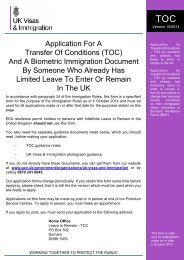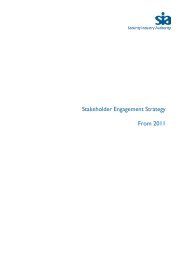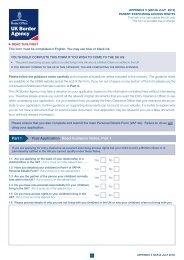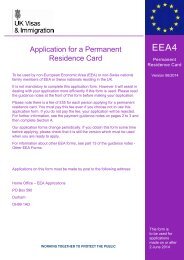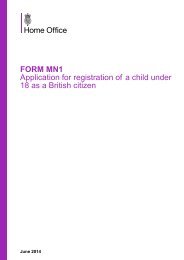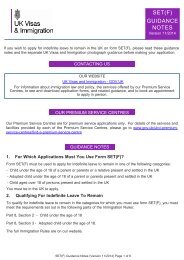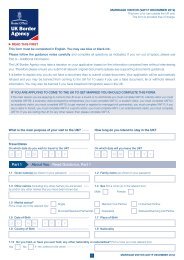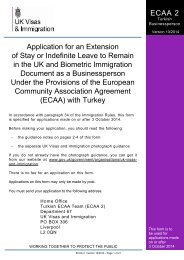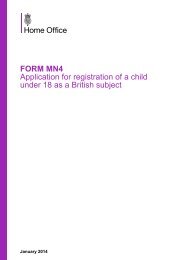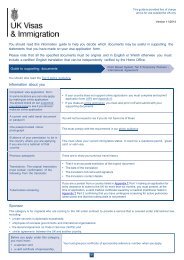Full Regulatory Impact Assessment for Manned Guards & Keyholders
Full Regulatory Impact Assessment for Manned Guards & Keyholders
Full Regulatory Impact Assessment for Manned Guards & Keyholders
You also want an ePaper? Increase the reach of your titles
YUMPU automatically turns print PDFs into web optimized ePapers that Google loves.
BASIC COST MODEL FOR A ‘TYPICAL’ BUSINESSAppendix 6Security guarding (and some Keyholding) companies1. Market <strong>for</strong>ces essentially drive the cost of training and the scale of prices involved can varydramatically. Businesses and individuals are advised to shop around <strong>for</strong> a competitiveprice. Costs <strong>for</strong> a typical security guarding business, with 50 licensable staff, are discussedusing a series of assumptions as explained in paragraphs 2-9.2. Wage levels range from £5 to £10 per hour at the current level of the available labourmarket, and this wage level has been used in Option 1.3. A substantially reduced labour market, under the toughest level of criminality criteria andcompetency requirements in Option 2, could raise the wage levels to a range of £8 to £15per hour.4. A partially reduced labour market, under increased levels of criminality criteria andcompetency requirements in Option 3, could raise the wage levels to a range of £7 to £13per hour.5. Training costs <strong>for</strong> staff would range from £60 to £90 per day <strong>for</strong> a modular four day trainingcourse. This would not be the same <strong>for</strong> all security guards currently in the industry becauseit is known that a number of individuals have already completed comparative andacceptable training. However, <strong>for</strong> these calculations it has been assumed that no traininghas been previously completed. In addition, no reductions have been made to the trainingcosts through available subsidies.6. Specific recruitment costs per member of staff range from minimal administration costs of£200 to £350 or more <strong>for</strong> a full advertising campaign. In addition to advertising, new staff(not previously employed and licensed) will need to undergo training, and licensing.Although churn rates vary significantly across the industry, an average churn rate of 24%could be applied to any calculations. Owing to the number of variables in recruitment costs,the calculations below have not included such an element and have instead concentratedon the one-off costs of licensing all staff in time <strong>for</strong> the commencement of regulation.7. In addition to the licence application fee cost, a cost of approximately £35 will be applied byawarding bodies <strong>for</strong> the registering of qualifications.8. When calculating time taken to apply <strong>for</strong> an SIA licence, this RIA has used the figure of 160hours. This has been calculated by multiplying the number of working hours lost during thetime taken if the applicant applies once the regulations come into effect and cannot,there<strong>for</strong>e, legally work while waiting <strong>for</strong> the licence application to be processed (does notapply if the business has signed up to the Approved Contractor Scheme). The averagetime to process a licence application is estimated to be 4 to 6 weeks (<strong>for</strong> the purposes of themodel below, the estimations are based on the application process taking 4 weeks. Thereason behind not using the 6 week application time is that existing arrangements in thedeployment of security personnel could be offset against the extra 2 weeks.) This wouldcover a four week period when a manned guard might reasonably be expected to work upto 8 hours per working day. However, given the marketing and communication programmesthat the SIA has established, this cost has only been applied to 10% of employees percompany, with the other 90% applying <strong>for</strong> their licences in advance of regulation.38



